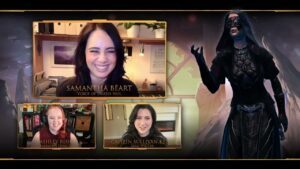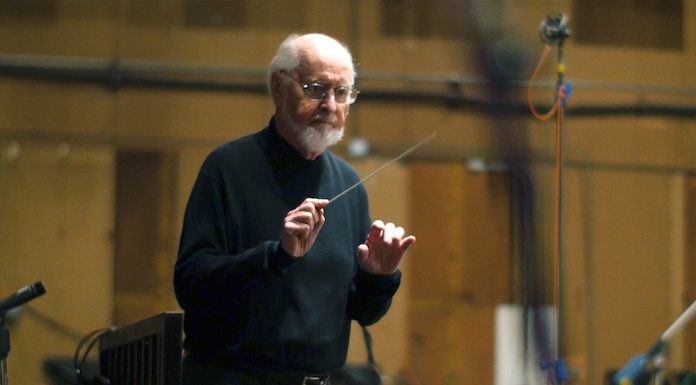Warhammer: Chaosbane can stand proudly alongside some of the best games to have used this setting.
Holy crap, there’ve been a lot of Warhammer games lately! But few have been as good as Warhammer: Chaosbane. This action-RPG has it where it counts, with fun classes, good boss fights, and a decent loot system. It trips up on presentation in some places, including some terrible voice acting, but it manages to get the feel of Games Workshop’s dark fantasy setting right.
The moment-to-moment combat in Chaosbane is some of the best I’ve gotten my bloodstained hands on in recent times. Whether you’re using a controller or a mouse and keyboard, moving, slashing, casting spells, and leaping through hordes of cultists to fire off a barrage of arrows all feels precise and impactful – though you can’t switch between them without going into a menu, which I found annoying since I like to fight with my thumbsticks and switch to seamlessly managing inventory with my clicker. Encounters have a satisfying flow with a good variety of enemies, though there aren’t a lot of elites with memorable or dangerous abilities you have to watch out for on the difficulties available at the start. They do show up when you unlock the higher levels, though.
Bosses are great on any difficulty setting. Each terrifying Greater Daemon features a variety of interesting mechanics that only had me cursing at my monitor once or twice – which is right about the sweet spot for tough RPG baddies. They force you to stay mobile and take opportunities to do damage when you can, which is a nice change of pace from most of the horde fights. The Plaguebringer, a very early boss, did get on my nerves a bit more than the others because the waves of minions he spawns are so numerous that the fight drags out way longer than I felt it needed to. But other than that, my only major disappointment was that I only got four of these things to go toe-to-toe with.
“
Three of the four classes are absolutely excellent, to the point that I had a really hard time picking a favorite.
Taking on these hordes is a bloody, chaotic pleasure thanks to a choice of four very distinct and well-designed classes. Three of them are absolutely excellent, to the point that I had a really hard time picking a favorite. Elessa the Wood Elf Archer nimbly leaps from place to place, always staying on the move and benefitting from an energy recovery mechanic that encourages you to find and tag your wandering spirit friend every time he lights up. Bragi the Dwarf Slayer is the archetypical Berserker: he builds up stacks of fury the longer he stays in combat to boost his energy regeneration as he rips through crowds of baddies. And Elontir… Oh, Elontir! This High Elf Mage may be the most fun I’ve ever had with a magic-user in an ARPG, thanks to his ability to take direct control of his spells using the spacebar or the left stick. This trick is extremely powerful if you master it, but it’s a real mental exercise to maintain positioning of both a spell and yourself during a hectic brawl. Which is, you know, how playing as a damn sorcerer should feel!
Then there’s, uh, a guy with a sword. I mean, he’s okay. He’s just not anywhere near as fun as the other three classes, especially in solo play where his defensive and taunt abilities slow you down more than they help out like they do in co-op. Sorry, Vollen.
Each character has multiple progression paths that give them new and exciting combat options in addition to incremental increases in power. Dozens of active and passive skills can be mixed and matched to assemble a build, with higher-tier versions of abilities costing more of a character’s finite pool of skill points. Even in the late game, you won’t be able to equip maxed-out versions of everything, which incentivizes making meaningful choices between a more versatile character with a grab bag of lower-tier skills, or a specialist who focuses on the fully-upgraded versions of a smaller number of them. There’s also a God Skill Tree that functions more like a typical RPG talent tree, with each being based on the character’s patron god. Most nodes on the tree give a small stat boost, but some can totally change the way you play – I was able to turn Elessa into a summoner who relies on hordes of dryads to hold back the tide of enemies, which was a lot of fun.
The all-important itemization is pretty well done, though not anything close to revolutionary. I didn’t come across a lot of gear that totally opened up new playstyles or gave me that feeling of going immediately from zero to hero. But the stat choices I got to make were interesting without being overwhelming, and the clean, readable UI makes it very easy to compare different pieces. There may well be more game-changers beyond my 25 or so hours of play on the harder, unlockable difficulties where Heroic-quality items really start to pop up, however.
“
The story wouldn’t be enough to keep me invested if the combat hadn’t been as fun as it is, but it didn’t get in the way of my enjoyment, either.
The story is… well, it’s Warhammer. Set about 200 years before Karl Franz and co. take the stage, and things are quite bad as the forces of Chaos are mounting one of their greatest invasions ever. You get to interact with some cool figures from the lore like Prince Teclis and Emperor Magnus the Pious, which is neat if you know who they are. You’ll journey from the burning streets of Praag to the frozen wastes of Norsca, where each map is full of personality accentuated by effective art, music, and sound design. There are some interesting twists and memorable side characters, too. Someone is probably going to try to sell you out to a demon lord at some point. It was mostly what I would expect: not enough to keep me invested if the combat hadn’t been as fun as it is, but it didn’t get in the way of my enjoyment, either.
In the long run, I’ll probably spend more of my time in the post-story modes, like randomized Expeditions and Boss Rush, so a less than spectacular story can be forgiven. Expeditions take place on shuffled versions of maps used for the campaign, which can get a little old after a while. I ended up in the same exact sections of hallway in the Nuln sewers often enough that each expedition didn’t feel as much like a new adventure as I’d like.
After beating the final boss, you can also purchase treasure maps that give you an instance of an expedition with special modifiers, like extra fire damage on monsters or constantly losing energy when standing still, in exchange for better loot drops. Expeditions and maps can also contain randomized events, like having to hold off daemons spewing infinitely from a ring of portals for a set amount of time, with great rewards for completion. It’s not the most robust endgame I’ve ever seen in an ARPG, but I was more than happy to have an excuse to stick around given how much I enjoy the combat.
“
The voice acting is inconsistent at best and actively painful in places, and not in the campy, scenery-chewing sort of way.
The presentation, however, can be Chaosbane’s bane at times. The voice acting, in particular, is inconsistent at best and actively painful in places. And not in the campy, scenery-chewing sort of way that a lot of Warhammer games have successfully embraced in the past. I’m talking so bad that I feel embarrassed on behalf of the actors. Elessa, in particular, is supposed to be a young, rebellious Wood Elf wanderer but sounds like a tutting, reedy, middle-aged British woman you would get stuck behind in line at the store because she needs to speak to a manager, immediately.
And I think I might have figured out why, based on the fact that there are a couple lines for Elessa that are randomly spoken by a different, male voice actor who sounds more like how I’d expect this type of character to talk. It seems like she was recast at the last second when they decided to make the character a woman, and some of the old lines were left in by accident. While I appreciate the attempt to not have the character select screen be a complete sausage fest, it seems rushed. All of the other playable characters sound much more polished.
The Verdict
Warhammer: Chaosbane can stand proudly alongside some of the best games that have used the foreboding, Gothic Old World as a setting. Action RPGs like this live and die based on fun combat and well-designed classes, and developer Eko Software really hit it out of the park on both of those counts. I look forward to hacking, blasting, and sniping my way through the daemonic masses with three of my favorite warriors whenever I get the urge. And maybe I’ll give Vollen another shot at some point, too. You know, he seems like a good kid.























